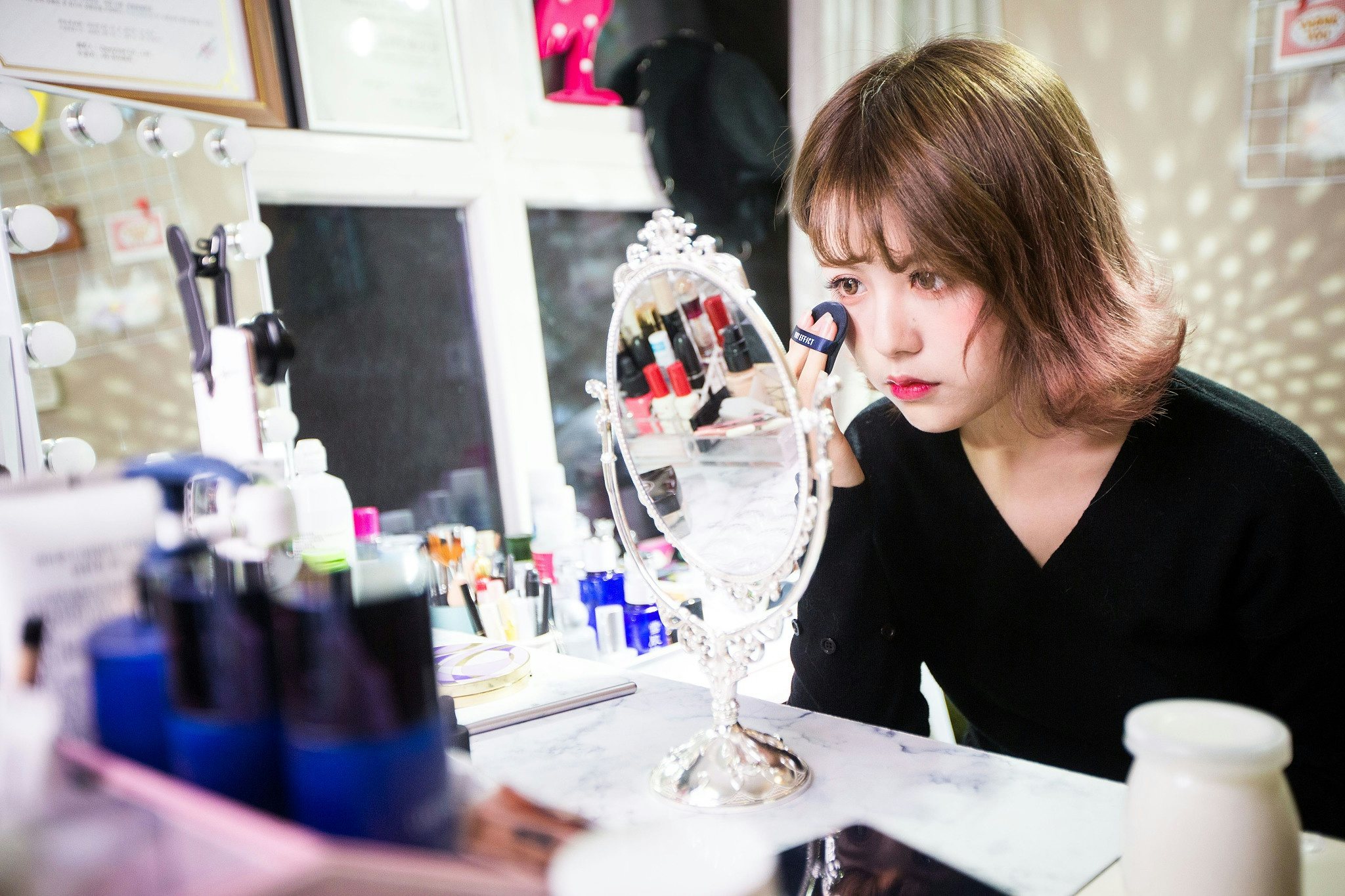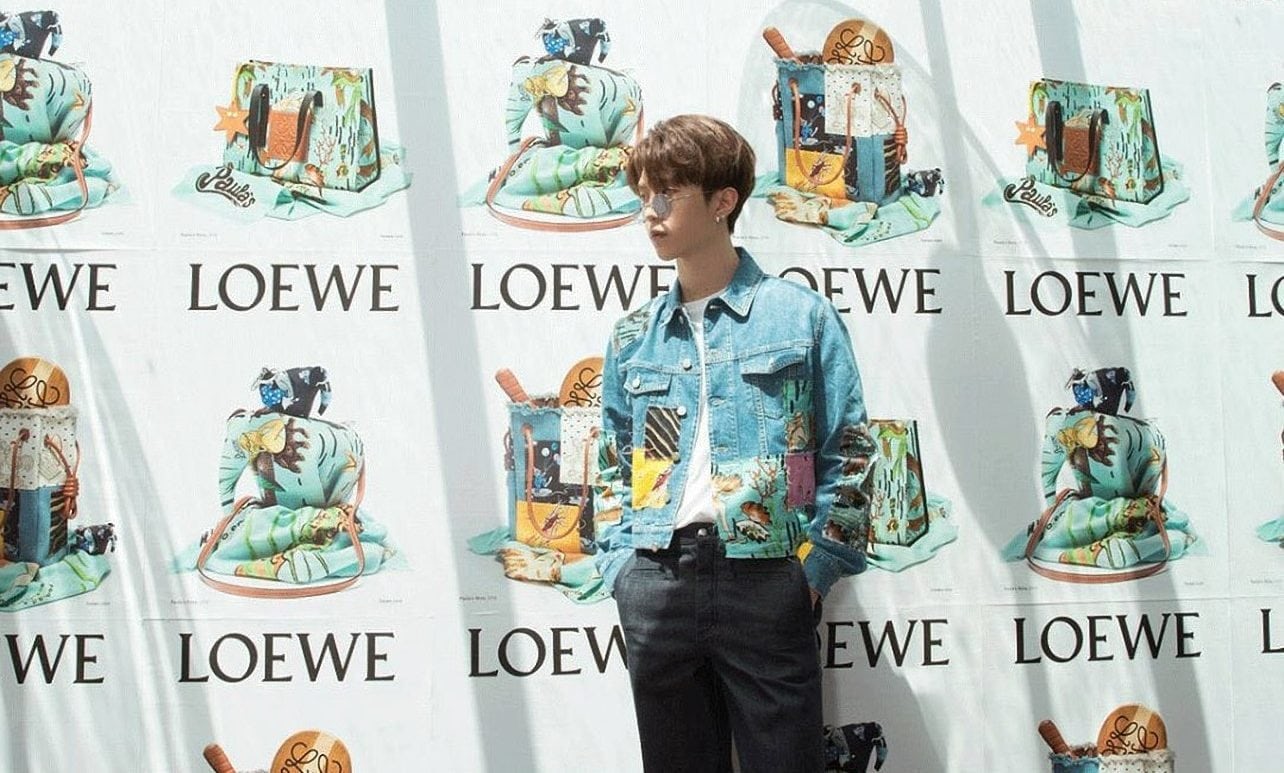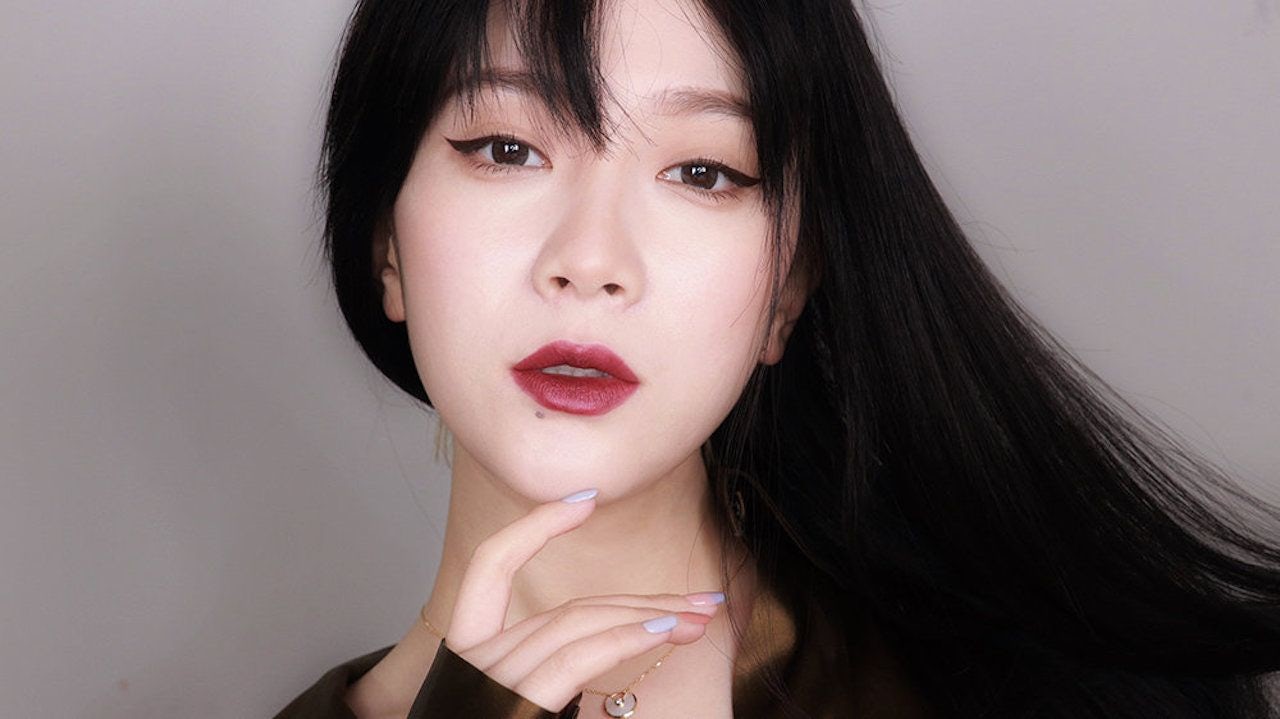A sweeping new survey on recent skincare-brand marketing strategies in China uncovers some surprising findings: Even the savviest of luxury brands are not always using the right platform, picking the right people, or sending the most effective message to showcase their offerings.
The report on the beauty industry, just released by Shanghai-based influencer marketing agency ParkLu, looked at 20 premier skin care brands, from Clarins to Shiseido. It ranked the success of their marketing as judged by social media mentions and audience engagement in May 2018. In this report, influencers refer to internet celebrities and bloggers who commented on beauty products.
Specifically, ParkLu looked at interactions between the 20 brands and Chinese influencers on the country’s major social media channels, including WeChat, Weibo, and RED.
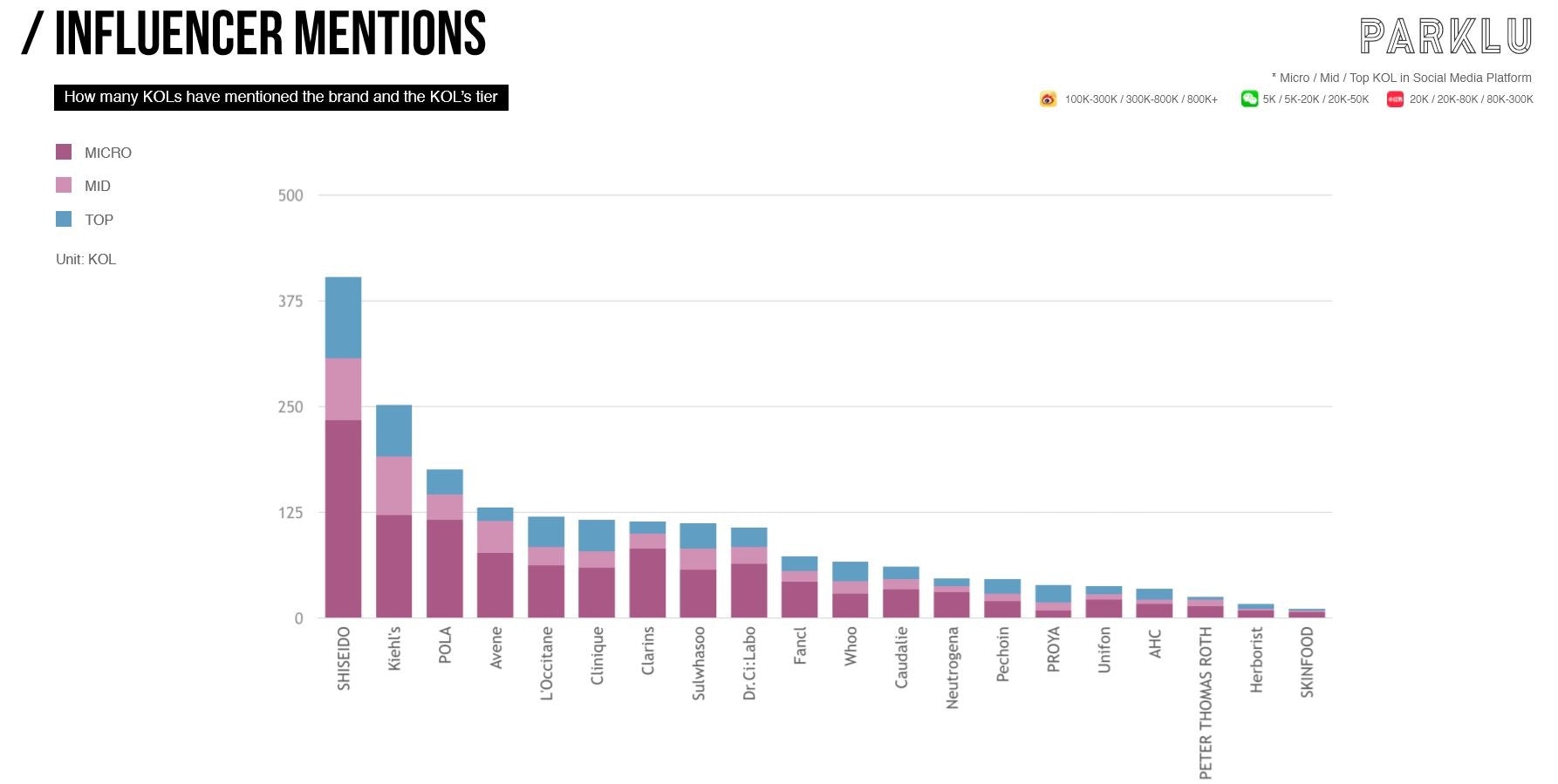
At first glance, the report shows Shiseido, the Japanese high-end beauty giant, outcompeted others in most performance metrics. The brand is known for its swift and sophisticated influencer strategy. It often works with the top, trendiest youth idols like Meng Meiqi and Fan Chengcheng, whose popularity skyrocketed online in recent months after participating in two reality shows – “Produce 101” and “Idol Producer”, respectively. Shiseido also collaborates with a wide variety of key opinion leaders (KOLs) for its online and offline events. But that wasn’t the whole story.
A deep dive into the PARKLU report reveals three rules that brands need to know if they hope to improve the effectiveness of their influencer marketing campaigns in China.
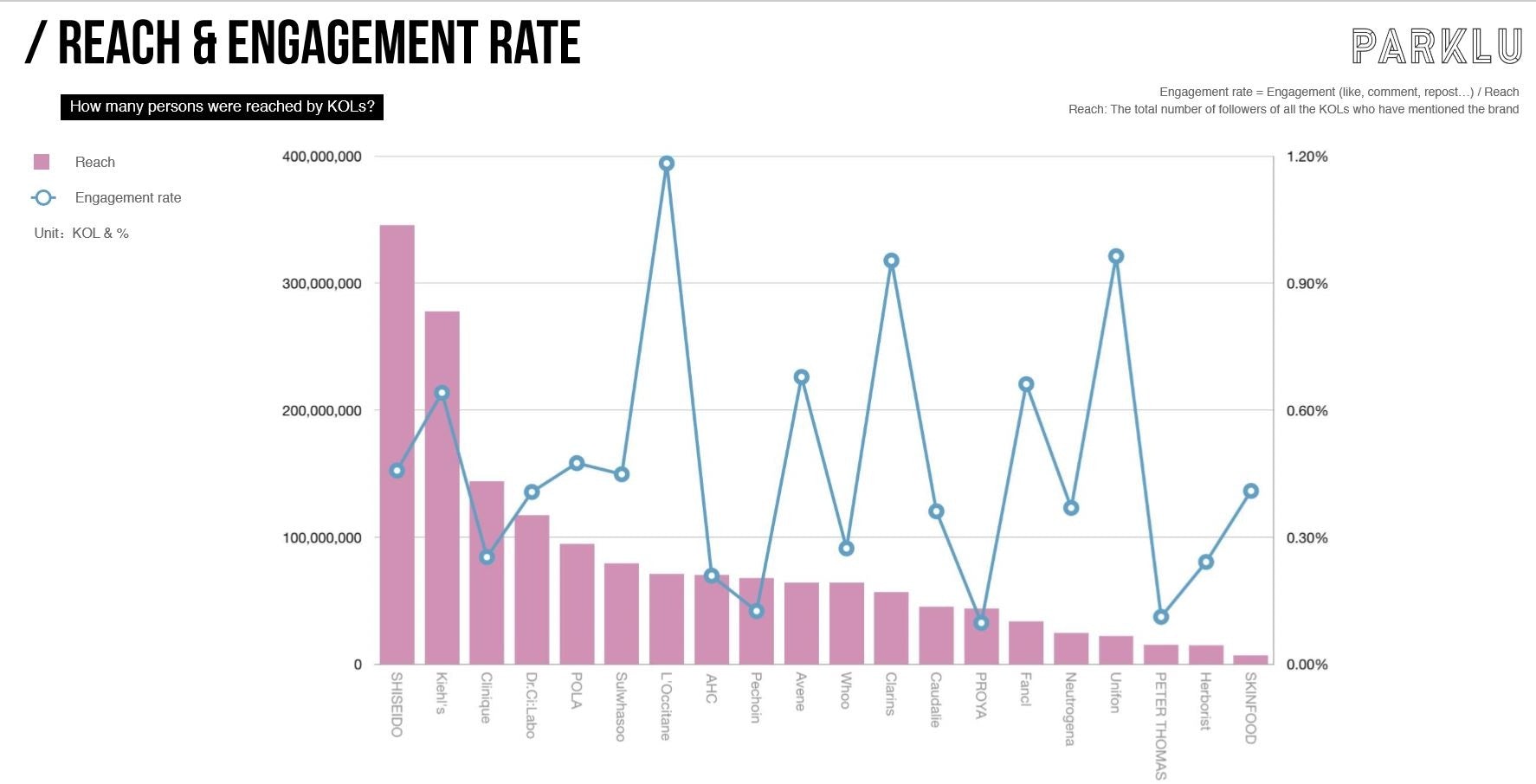
1. Craft timely and personal content#
Skincare labels like L’Occitane, Clarins, and Unifon achieved exceptional engagement rates with consumers, even though their number of mentions by influencers only ranked #7, #12, and #17.
“The high engagement rates of these bands were due in large part to the content of the posts, in L'Occitane's case a focus on the 6/18 event,” said Elijah Whaley, chief marketing officer of ParkLu. “Actually, that was a big trend this year, many KOLs shared their 6/18 shopping lists.”
So, the secret to driving high engagement with online readers given a relatively limited exposure lies in influencers’ personal content.
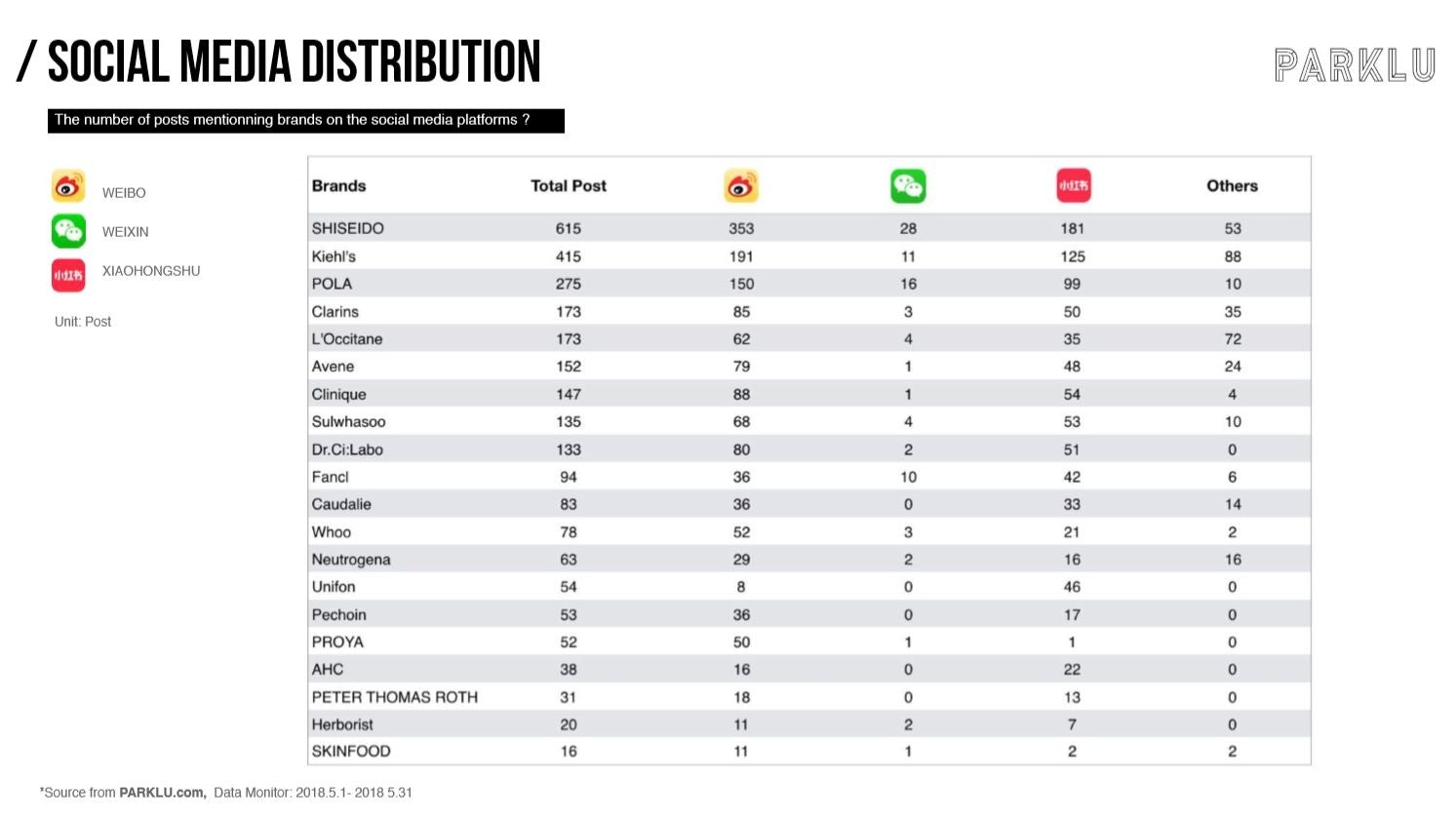
2. Find the right platforms#
Uncovering the right platform for influencer marketing is another significant factor that can determine the success of the campaign. Most beauty influencers tracked in the report preferred the open platforms Weibo and RED to WeChat. (WeChat is the biggest social media platform with over one billion users in China but it is a closed ecosystem established based on networks of personal connections). ParkLu explained WeChat is a distant third due to the difficulties that brands and KOLs have generating viral buzz on the platform.
3. Nurture authentic relationships#
Not too long ago, foreign brands were skeptical about influencer marketing in China. But now most brands accept that they have to work with a beauty influencer in China (some of these are paid, some mentions are organic). According to the 2017 Digital Commerce Trends Report, 63 percent of brands interviewed in China indicated they would enhance their collaboration with influencers in terms of product or brand promotion because they believe in the return on investment of influencer marketing. But not all influencers, and influencer endorsements, are equally powerful.
The report showed that brands need to start building real and authentic relationships with influencers. A detailed, specific or emotional post written by an influencer who truly adores a brand and one written as a paid endorsement has a notably different result in an era when the younger generation desires authenticity more than ever.
“This is due in large part to the fact that KOLs will talk about brands they like. If brands want preferential treatment by KOLs they need to lay the brand preference groundwork,” Whaley suggested.
